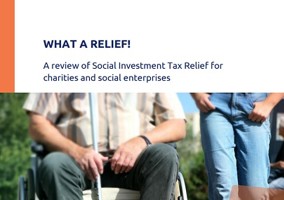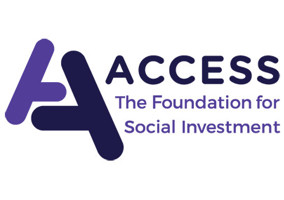In a year when international development organisations and charities have been seriously put under the spotlight, social finance has emerged as a potential antidote to the issues facing the international sector. Traditional fundraising remains a mainstay of the sector, but with a greater array of challenges comes a need to tackle problems from a different mindset.
Social finance offers this different approach. By setting out clear goals and objectives from the outset, social finance instruments allow real, measurable targets to be tracked. The success of these projects provides substantial learning opportunities for future endeavours. One such method is the use of a Development Impact Bond (DIB).
DIBs are results-based finance mechanisms in which funders only pay for successful results. Through the DIB mechanism, donors only pay their money after an independent evaluator has determined that the programme has been successful, and the pre-determined results achieved. The money required for the delivery organisations to do their work comes from risk investors, who in effect lend their money through the DIB and get their money back, from the donors, after it has been successful. If it does not work, the risk investors lose their money and the donors don’t pay. The risk investors receive a small return if the outcomes are met.
Quality Education India DIB
My organisation, the British Asian Trust, along with our consortium partners: UBS Optimus Foundation, Tata Trusts, The Michael & Susan Dell Foundation, Comic Relief, The Department for International Development, the Mittal Foundation, and BT (British Telecom), have recently launched the Quality Education India DIB.
This is the largest education DIB in the world, raising $11m to advance the quality of education in India. Over four years, the DIB will aim to improve literacy and numeracy skills for more than 300,000 children. It has the potential to transform the way education is funded in India and we believe that approaches of this nature can play a huge role in helping to bridge the financial gap required to meet the UN’s Sustainable Development Goals.
With all the excitement around social finance, many in the sector are thinking seriously about taking on such approaches. Yet, despite the clear benefits of an outcome-focused approach, this isn’t a one size fits all solution. All too often people see social finance as a different way of fundraising as opposed to a different way of working.
Drawing on my experience as chief executive of the British Asian Trust, which is at the forefront of social finance developments, I have outlined three key areas that development organisations and charities need to know if they are serious about entering the fold.
1. Patience is a virtue
There are no quick fixes through social finance: success will only come to those committed to the long haul. There are two components to this. First, the planning and preparation involved in such complex, multi-party finance instruments. Second, often social finance projects take longer because you are investing in an evolving project that will change over time.
This is something that we have first-hand experience of. The Quality Education India DIB took two years to get off the ground. There was a huge amount of planning and behind the scenes work before it was launched. We are taking on a massive challenge over four years, but the only way we would be able to tackle this task is through a long-term approach that seeks to create lasting change in education standards.
2. Clear, and realistic, goals
The distinguishing characteristic of social finance instruments is that they are primarily outcome and results driven mechanisms for social good. As such there is a central need for the outcomes and goals to be clear and realistic, as well as measurable so that success can be quantified. This naturally lends social finance to projects where data can clearly be tracked and analysed. The example of education provides a prime example of a project that can be tied to tangible, measurable goals and therefore the success or failure to meet these goals can be analysed and lessons learnt.
That being said, social finance isn’t the answer to every problem. There are areas where outcomes are very tricky to measure which means that they might not be right for the social finance model. Take, for example, any long-term programme that is about driving attitudinal change. Changing public perception does not lend itself to the social finance model because it can be difficult to quantify and measure clear outcomes.
In cases where social finance is a viable option, the goals need to remain realistic in order to be able to attract investment. The role of the risk investor is to put up the capital required to complete the project, but there is still a risk premium attached to this capital which justifies the outlay for that investor. If the project set hugely ambitious targets that were unlikely or incredibly difficult to achieve then the project would struggle to attract the necessary funding.
3. Adaptability and willingness to work with others
Perhaps most important is the need for collaborative working. Social finance often involves multiple parties coming together to perform social good. This type of working requires a specific mindset and approach and so has to be owned by the board and senior management team to make sure that there is total buy-in to the project.
There must be a willingness from all parties to tackle problems in a different manner and to think differently about challenges in order to be successful. This collaboration between NGOs, investors and charities, requires all parties to be bought into the process and committed to seeing out the project.
Not a silver bullet
Despite the vast benefits to be reaped, social finance is not a silver bullet that can be applied to every case and produce spectacular outcomes. Yet what it can do is help us to change the way that we approach philanthropy and development programmes.
By starting with the question “what would success look like”, the approach commits those involved to measure what they mean by success and provides deliverable targets. The scale and scope of instruments such as DIBs and social impact bonds (SIBs) is growing, but in a market worth a potential $2tr there is a huge amount of potential for the popularity and success of these mechanisms to continue to flourish.
Richard Hawkes is chief executive of the British Asian Trust
Related articles












